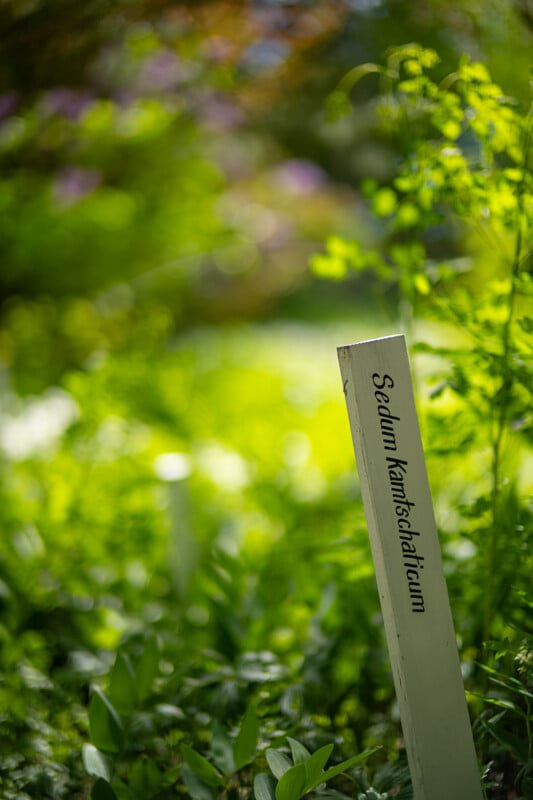Just How Good Are the Voigtlander Nokton 50mm f/1.0 and 40mm f/1.2?
Recently, I’ve pushed myself to look at third-party lens brands from China, which offer interesting character at a relatively low price. I wanted to try out the lenses that cost more money but might provide a more compelling user experience and the Voigtlander manual focus primes could be the answer.
Cosina has been making cameras and optics for a long time and, under the licensed Voigtlander name, has long made glass for rangefinders, SLRs, and mirrorless cameras. Cosina is a Japanese lens manufacturer and has a good reputation for making precision lenses.

I got my hands on two of the fastest primes Cosina makes: the Nokton 50mm f/1 on Sony E-mount and the Nokton 40mm f/1.2 on Canon RF-mount. Canon has restricted third-party lens support for years and has caught much flak for doing so, but Cosina’s manual focus offerings were — up until recently — the only options Canon seemed okay with sanctioning. Seeing a lens like the Nokton 40mm working seamlessly with full communication to the Canon R5 body is wonderful, to say the least. I was eager to try these lenses out but it has to be understood that both lenses make a bigger dent in the wallet. With both cameras and lenses in hand, I headed out for some testing.


Voigtlander’s Handling is Sublime
To be fair, most of the affordable glass on the market is machined nicely, with smooth-turning focus rings, working aperture adjustments, and fine engraving on the metalwork, and that is certainly the case here. Both Nokton lenses are machined precisely with smooth focusing and clear depth-of-field scales on the lenses. The 50mm f/1 is slightly heavier at 16.9 ounces (480 grams) and has a larger 67mm filter ring. The 40mm f/1.2 is slightly smaller at 14.8 ounces (420 grams) and takes a 58mm filter on the front. I have no complaints at all about the machining work, and the aperture clicks positively throughout its range. Filters are going to be important for these lenses because bright and sunny days will require ND filters in order to use the brightest apertures and still get proper exposure. I wouldn’t get either lens particularly wet or dusty but the solid handling is reminiscent of the finer-quality lenses from the analog photography days.


Most importantly, both lenses transmit full EXIF data to the cameras and subsequently to the images. I could see the name of the lens, the chosen aperture, the focal length, and all the other good stuff we take for granted with modern lenses. The camera bodies also automatically adjust the IBIS units to correct for the focal length and the manual focus assist functionality works seamlessly too. My chief complaint with the more affordable Chinese lenses is the lack of communication with the body, so having that functionality here with Voigtlander is almost worth the higher price by itself.

These Lenses Have Character
Both these lenses have character and I found that both actually share character, which is to say that both lenses have very similar-looking results. As a result, I will largely mention things about them together, pointing out the significant differences where applicable. Shallow depth-of-field is very easy to achieve with either lens so let’s start with the bokeh.


When stopped down, the 50mm f/1 aperture blades have a noticeably rounder appearance than the 40mm lens does, which should create a slightly smoother look to the backgrounds and transitions of focus. However, I found the results to be almost identical on both lenses. The corners of both lenses will show a somewhat swirly-looking rendering at wider apertures and both lenses have a strong cat’s eye effect. The bokeh has a classic look that mimics Petzval-style lenses and is fun for landscapes and portraits. Specular highlights are clean and free of onion rings or any soap bubble look which is why both lenses have beautiful-looking bokeh overall. Stopping the aperture down slightly largely cleans up any cat’s eye effect and gives nice smooth backgrounds that blend into a wash of color and tone.


Flare resistance was something I was concerned about because many of the lenses out of China seem prone to washed-out tones and wild ghosting when pointed toward bright lights. The Voigtlander lenses exhibit quite the opposite, with excellent flare control overall. Some loss of contrast occurs at the brightest apertures but ghosting is well controlled, even when stopped down heavily. Sunstars are rather poor on either lens though, so I wouldn’t use them if this is a priority for you.


Ultra-bright lenses do tend to exhibit lots of LoCA, or longitudinal chromatic aberration. This is certainly the case with both Nokton lenses, with both lenses having strong green or magenta color casts in any out-of-focus areas. In fact, I often found myself manually focusing by utilizing the LoCA, and If the image skewed green or magenta I would refocus until it was neutral. This is clearly a poor result and could be an annoying or distracting problem in some photos. LoCA is very difficult to get rid of in editing so either be prepared to go black-and-white or chalk it up to “character”.


Sharpness results are pretty similar between our two Voigtlanders but there is some deviation here. The 50mm f/1 is the sharper lens when shot at the widest apertures. Although contrast is still low at f/1, the 50mm does retain decent detail and sharpens up very quickly with even a little stopping down. The corners are quite poor on both lenses with heavy vignetting as well, but the 50mm f/1 does a much better job wide open, both in the center and the corners. Regardless, I’d keep subjects fairly central or stop the aperture down a few clicks when possible.
The 40mm at f/1.2 is quite low-contrast and also has a bit of a blurry look to it which can be distracting when shooting stark subjects against a faraway background. By f/2 the lens is great and the blurry effect is gone but those corners suffer more than the 50mm lens does. I’d certainly use these lenses wide-open for portraits and street photos but these are not astral-photo lenses despite the bright apertures.


Who Should Buy These Lenses?
I think the Voigtlander lenses here justify the higher price by offering enough important optical performance such as stunning bokeh and flare resistance while still retaining the quirks and oddities that make lenses like this fun. I often find that many of the Chinese lenses available are limited in scope and can have image quality side-effects that either work great or ruin the photograph. Obviously, though, the range of Chinese lenses is voluminous and there are some absolute gems among them.
Still, these Voigtlander lenses seem like a way to get fun optics without the major headaches. The 40mm impressed me with its excellent bokeh and compact size, and it is substantially less expensive than the 50mm. However, the blurriness at f/1.2 is limiting, especially when that is a major selling point for the lens. The 50mm f/1 gives you a wider range of apertures to use and performs better wide open while still giving the fun character inherent in both lenses. It’s more money but it might be worth it.